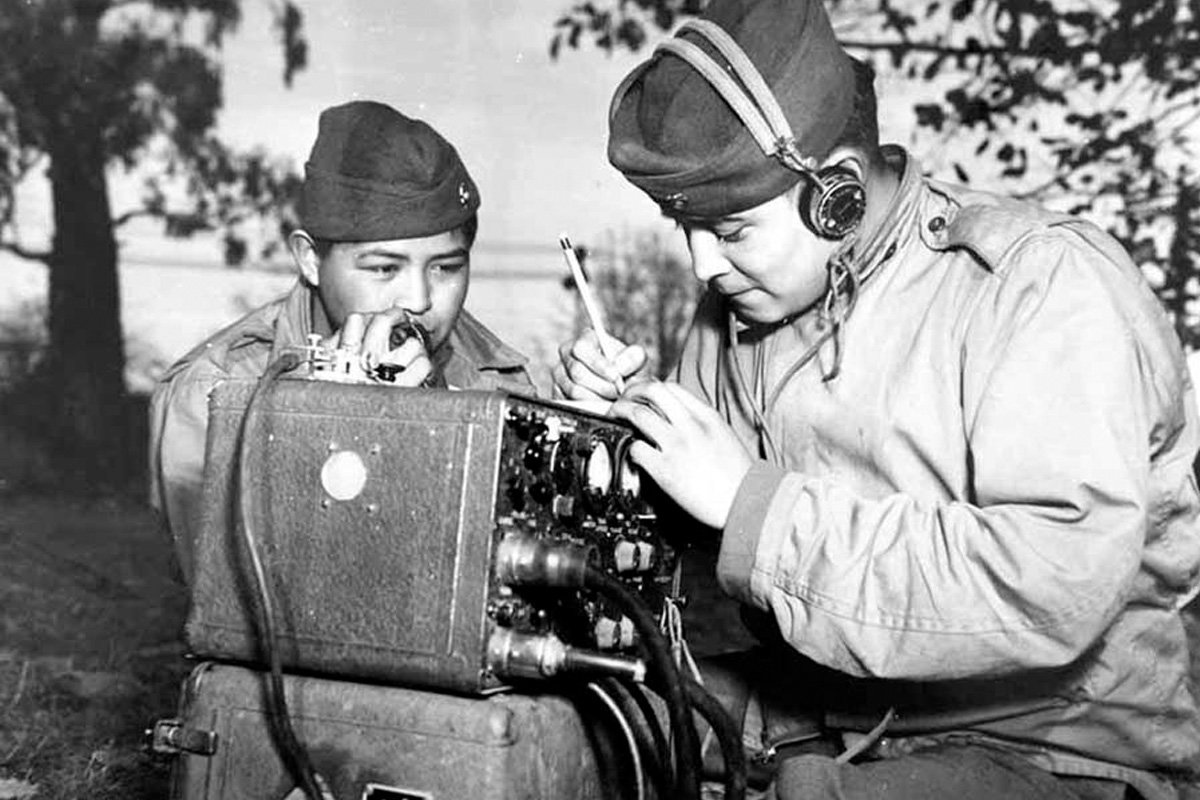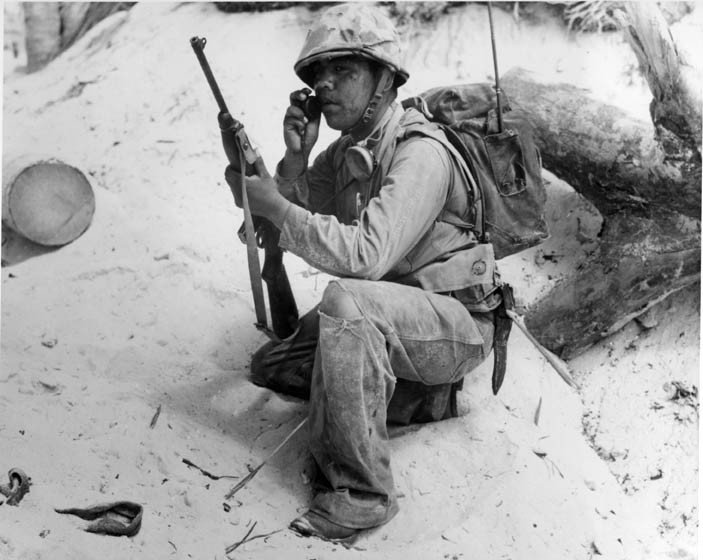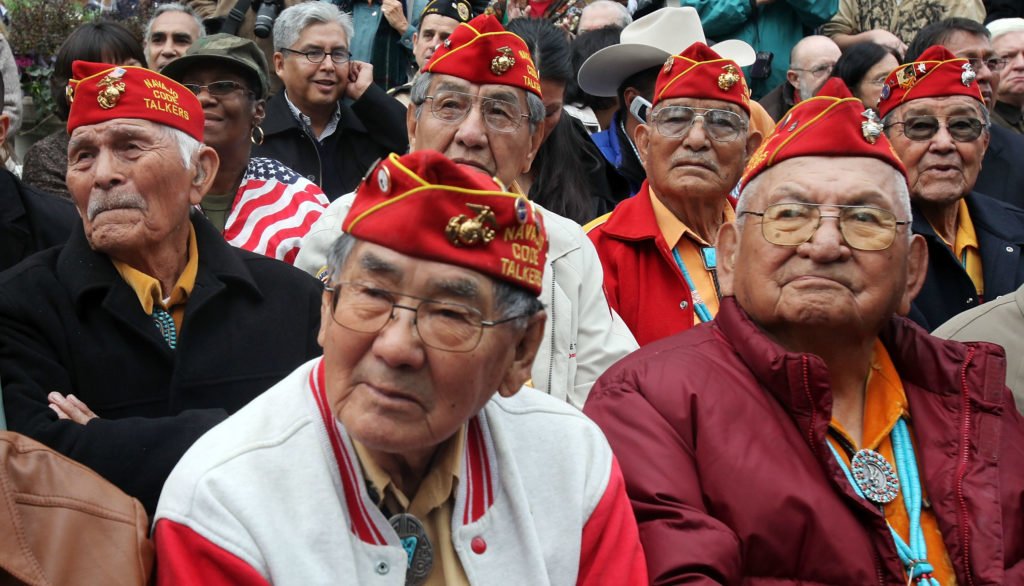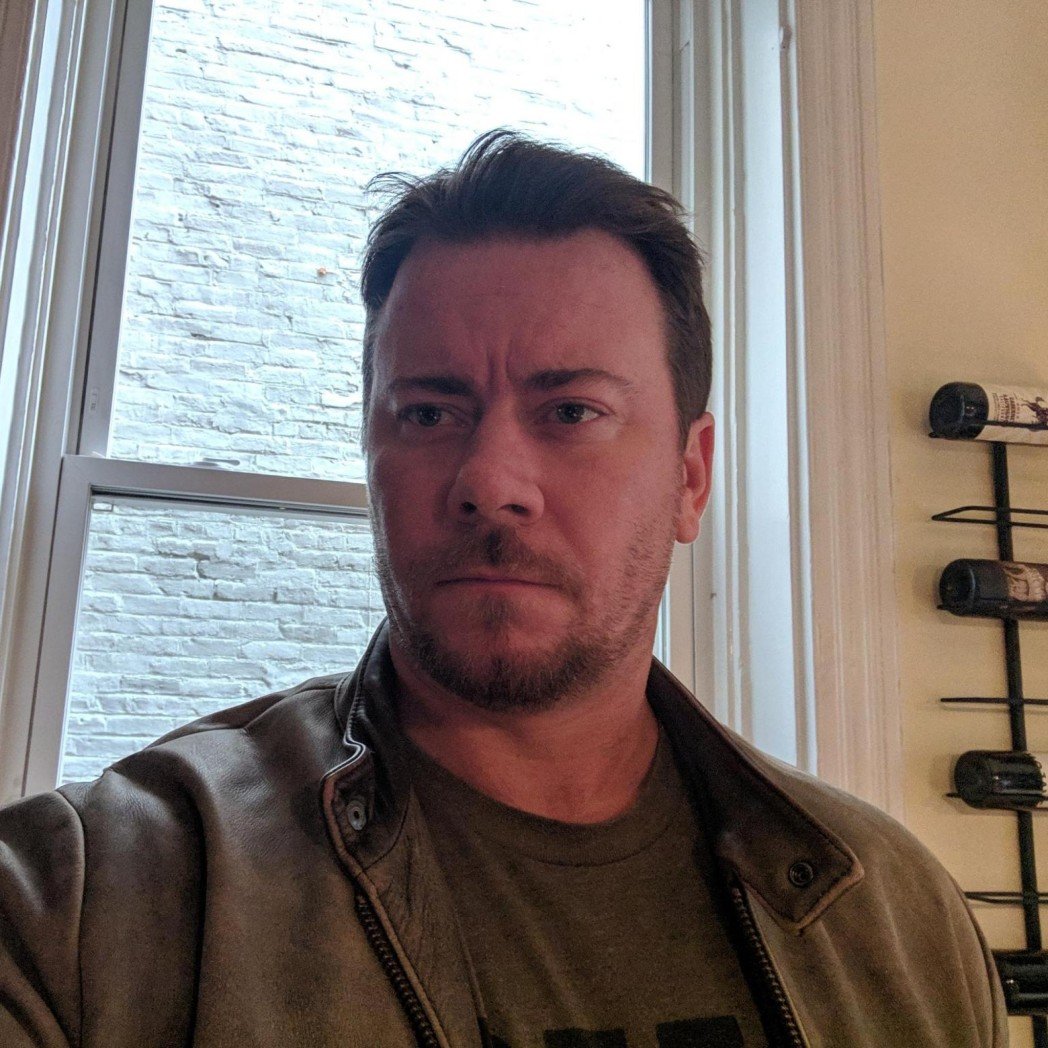How the Navajo Code Talkers Changed the Course of World War II

Pfcs. Preston Toledo and Frank Toledo, both Navajo Code Talkers and cousins, relay orders in the Navajo language on a field radio, July 7, 1943. They were attached to a Marine artillery regiment in the South Pacific. US Marine Corps photo.
Despite years of abuse and mistreatment by the United States government, many Native Americans have remained loyal to this land and the idea of patriotism. This is never more apparent than when discussing the “code talkers.”
Code talking was first used during World War I with soldiers from the Choctaw tribe, who began speaking their native language to confuse the Germans. However, it was the Navajo Code Talkers of World War II who revolutionized the practice. Members of the Navajo tribe participated in all the assaults that the U.S. Marines led in the Pacific from 1942 to 1945, including Guadalcanal, Tarawa, Peleliu, Okinawa, and Iwo Jima.
According to the national archives, the concept of using the Navajo language as a military code came from Philip Johnston in 1942. He was a World War I veteran and the son of a missionary who lived in the Navajo Nation. Johnston got the idea after reading an article that talked about how the U.S. Army used the language of Native American soldiers during World War I. Jonhston had grown up with the Navajo language and was aware that it wasn’t widely known or understood — even by other tribes.

On March 6, 1942, Major General Clayton B. Vogel issued a letter supporting an effort to recruit 200 Navajo men for the U.S. Marines. He stressed that the complexity and oral history of the Navajo language would make it difficult for the enemy to isolate and decipher. The initial recruitment of the Navajo Code Talkers was approved, but the Navajo men would have to meet the regular qualifications for enlistment, go through seven weeks training, and meet the fluency requirements of both English and Navajo.
Twenty-nine Navajo men arrived at the Recruit Depot in San Diego for basic training on May 5, 1942. After training, they joined the Marines in taking a language that was already mysterious to most of the world and turned it into an unbreakable code. They used two methods to accomplish this task. The first method was assigning a Navajo word to each letter of the English alphabet. For example: “A” is for apple, or bilasáana in Navajo. The Code Talkers then spelled out words when delivering communications across the radio.
A second method was used when there wasn’t a preexisting word in the Navajo language adequate to convey the message. Instead of spelling out the message, they would use an informal descriptive message. For example, when they needed to communicate intel about a submarine, they would transmit the words “iron fish.”
The Coder Talkers revolutionized code transmission not only due to the heightened level of security it provided, but also because of the speed with which transmissions could occur. According to the CIA, a skeptical lieutenant decided to test their skills and the code before trusting them to deliver actual combat messages. The Code Talkers successfully transmitted and re-translated a test message in two and a half minutes. Without using the Navajo code, it could take hours for a soldier to complete the same task.
Iwo Jima was one of the most prominent and strenuous tests of the Code Talkers. Throughout the invasion, six Navajo Code Talkers operated continuously, sending more than 800 messages.

By the end of the war, about 400 young Navajos were trained as Code Talkers. However, since the language was still considered valuable as code even after the war, these young heroes were sworn to secrecy. It would be 23 years before the government declassified the information and the Code Talkers were allowed to share their stories in 1968.
In 2001, the Navajo Code Talkers were honored for their service during World War II. The original group — the first 29 — were awarded the Congressional Gold Medal, with another 250 Code Talkers receiving the Congressional Silver Medal.
The bravery and sacrifice of the Navajo Code Talkers is indicative of the proud and determined people they come from. Their legacy was recognized in the 2002 movie “Windtalkers,” which details their journey and the hardships they faced. There is also a Navajo Code Talkers Museum that was built by the Navajo tribe in Arizona. It contains some of the gear, tools, stories, and transcripts used by the Navajo Code Talkers.

Dustin Lehmann is a combat veteran of both Iraq and Afghanistan. After his military service, he earned an undergraduate degree in American Literature and Economics and Juris Doctorate at the University of Cincinnati. He also deployed twice more as a private contractor. Dustin currently serves as the CEO of Risers Consulting and is the Founder of The Leadership Group (TLG). When Dustin isn’t working, he enjoys writing, spending time with his dogs, reading anything with a Marvel or DC stamp on it, and playing as much golf as possible.
BRCC and Bad Moon Print Press team up for an exclusive, limited-edition T-shirt design!
BRCC partners with Team Room Design for an exclusive T-shirt release!
Thirty Seconds Out has partnered with BRCC for an exclusive shirt design invoking the God of Winter.
Lucas O'Hara of Grizzly Forge has teamed up with BRCC for a badass, exclusive Shirt Club T-shirt design featuring his most popular knife and tiomahawk.
Coffee or Die sits down with one of the graphic designers behind Black Rifle Coffee's signature look and vibe.
Biden will award the Medal of Honor to a Vietnam War Army helicopter pilot who risked his life to save a reconnaissance team from almost certain death.
Ever wonder how much Jack Mandaville would f*ck sh*t up if he went back in time? The American Revolution didn't even see him coming.
A nearly 200-year-old West Point time capsule that at first appeared to yield little more than dust contains hidden treasure, the US Military Academy said.












